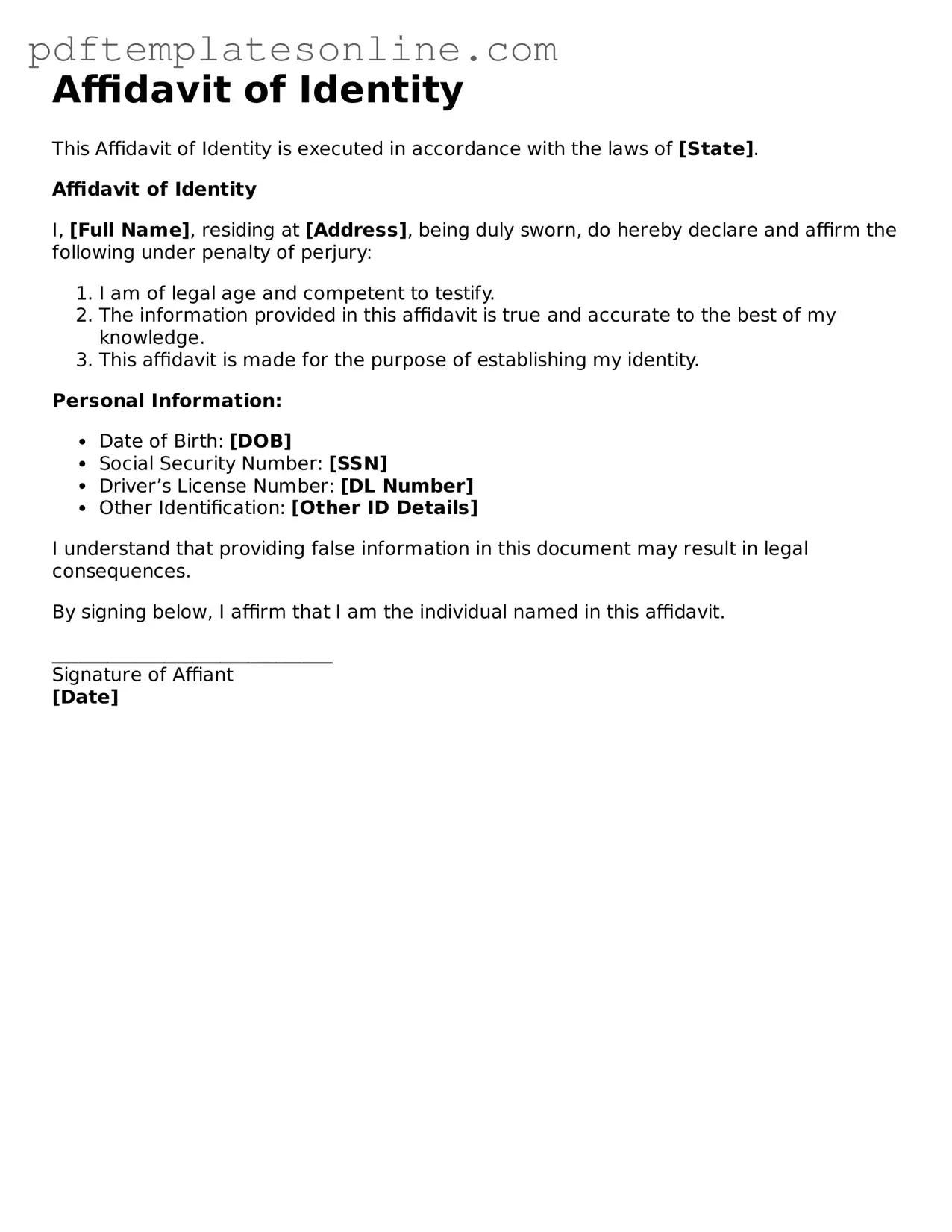Filling out the Affidavit of Identity form is an important step in verifying one’s identity, but many people make common mistakes that can lead to delays or complications. Understanding these pitfalls can help ensure a smoother process.
One frequent error is incomplete information. When individuals leave out essential details, such as their full name or date of birth, it can create confusion. Every section of the form is designed to gather specific information. Omitting any part can result in the form being rejected or requiring additional follow-up.
Another mistake is using incorrect or outdated information. It’s crucial to provide current details, especially regarding addresses or legal names. If someone has recently changed their name or moved, they should ensure that the information reflects these changes. Failure to do so can lead to mismatches with official records.
People often forget to sign the form. A signature is not just a formality; it is a declaration of the truthfulness of the information provided. Without a signature, the form is incomplete and cannot be processed. Always double-check that you’ve signed where required.
Some individuals may also neglect to provide supporting documents. Many Affidavit of Identity forms require additional proof, such as a driver’s license or passport. Failing to include these documents can stall the process. It’s wise to review the requirements carefully before submission.
Using illegible handwriting is another common issue. If the information is difficult to read, it can lead to misunderstandings or errors. It’s advisable to print clearly or type the information when possible. Clear communication is key in legal documents.
Many people do not review the form thoroughly before submitting it. Taking a moment to check for errors or inconsistencies can save time and hassle later. It’s easy to overlook mistakes, but a careful review can catch them before submission.
Lastly, some individuals fail to keep a copy of the completed form. Having a copy for personal records can be invaluable if questions arise later. It provides a reference point and can help clarify any issues that may come up during processing.
By being aware of these common mistakes, individuals can improve their chances of successfully completing the Affidavit of Identity form. Attention to detail and thoroughness are essential in navigating this important process.
